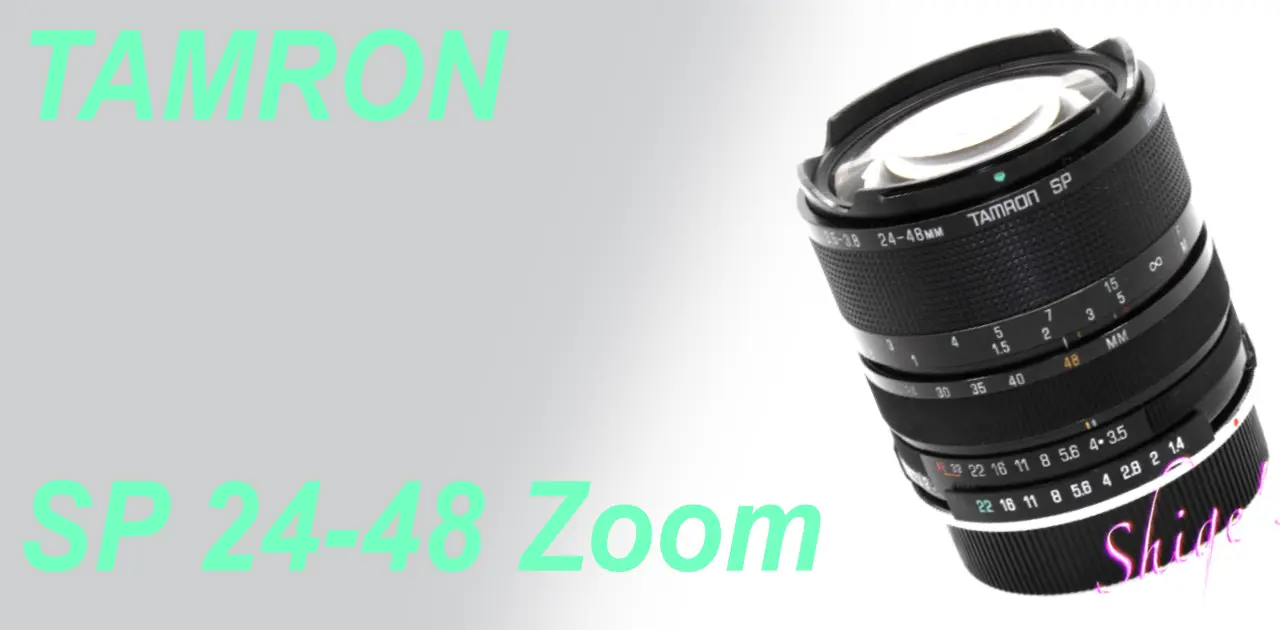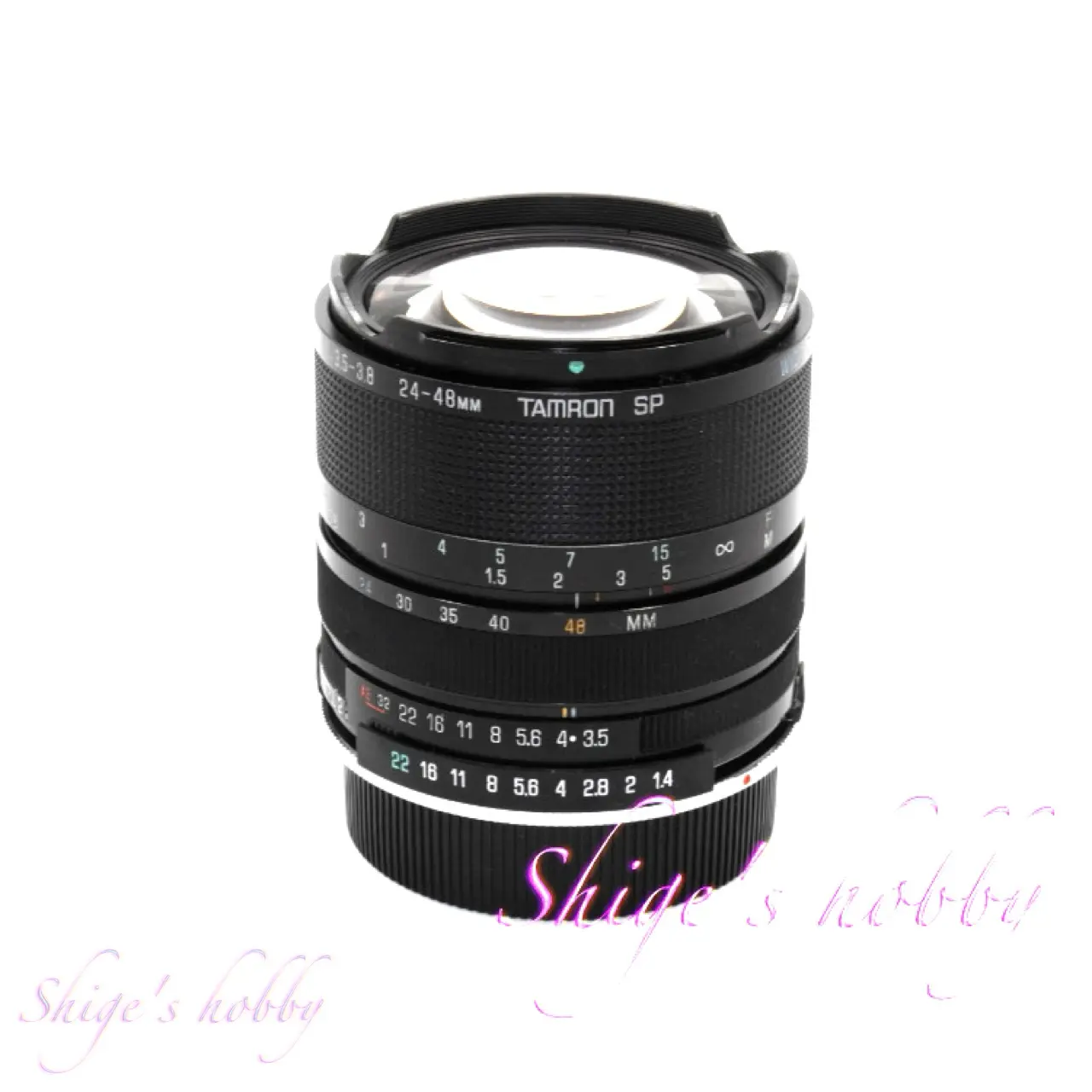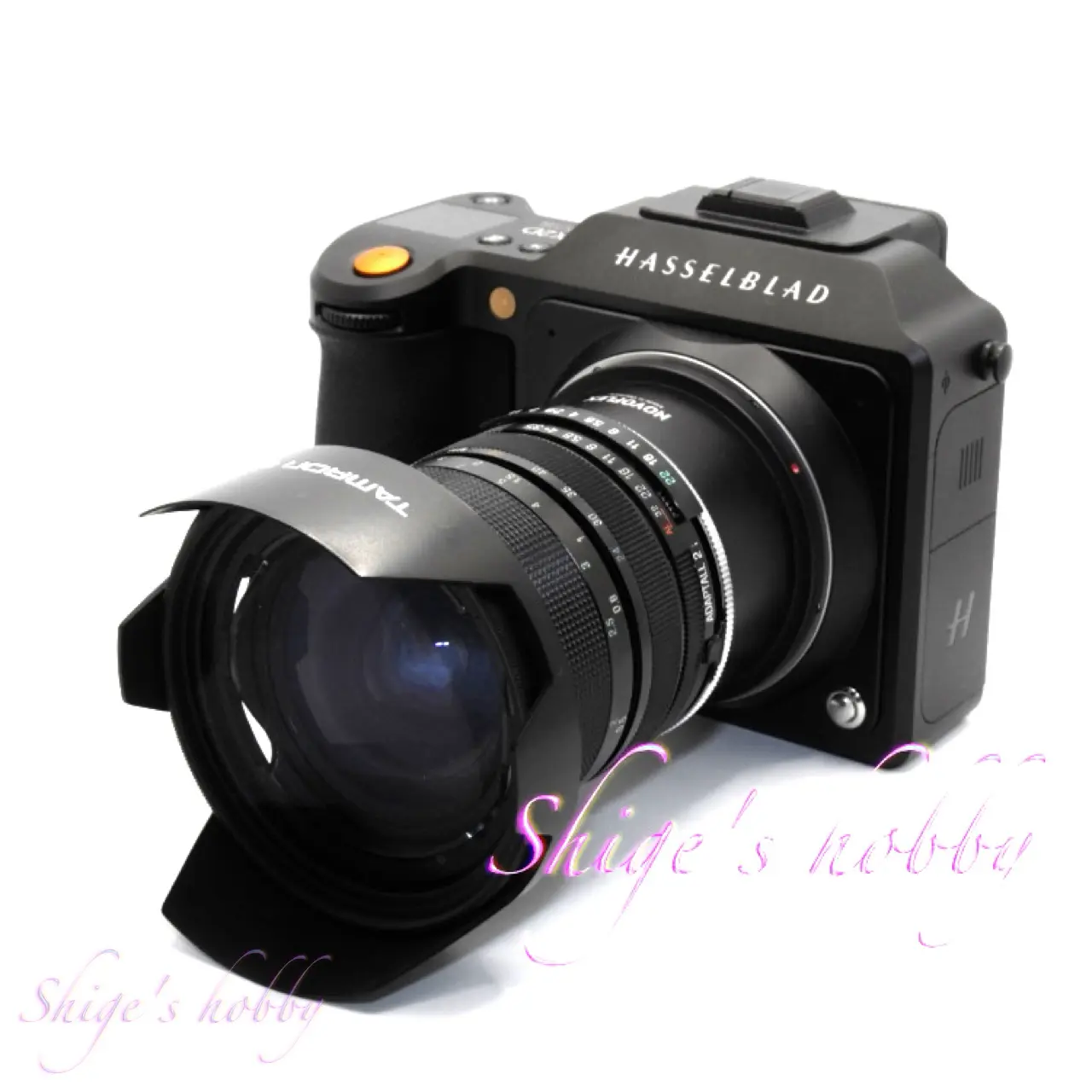Tamron SP 24-48mm F/3.5-3.8(13A)

A review and sample photos of the Tamron SP 24-48mm F/3.5-3.8 (13A) used with various digital cameras.
- Please see the disclaimer regarding advertising here.
- Italicized links in the text are advertisement links that take you to other sites.
Table of contents

Gallery
The following cameras were used to take the sample photos:
- HASSELBLAD X2D-100C
- LEICA SL Typ601
Review


1.Overview
The Tamron SP 24-48mm F/3.5-3.8 (13A) is a 2x zoom lens released in 1980. It is positioned as a premium lens in Tamron’s SP (Special) line. That said, 27 of the 55 Adaptall 2 lenses are SP lenses, so it’s hard to say it commands a premium.
The lens uses Tamron’s proprietary Adaptall 2 mount, making it compatible with a wide range of lenses, including Nikon-F, Canon-EF (EOS), α (MINOLTA), Leica-R, and Pentax-K.
Lens filters screw into the 27FH hood, so they cannot be attached without a hood. This lens is occasionally found used, but is often sold without the 27FH hood.
The hood is made of delicate plastic and will break over time or if dropped.
Since a long time has passed since it was manufactured, there are few hoods left and it is difficult to find the hood alone.
2.Usability
The Tamron SP 24-48mm F/3.5-3.8 (13A) is an older zoom lens, but its wide-angle end starts at 24mm, making it highly convenient.
As an older zoom lens, image quality is relatively good in the center, but the edges are rough. Color fringing can occur in some scenes, and distortion can be noticeable when photographing linear subjects.
When shooting in backlight, ghosting can occur in the image, but the loss of contrast is not noticeable.
The lens is a rotating zoom lens. From the front, the focus ring, zoom ring, and aperture ring are arranged in this order. Rotate the ring in the following directions to change settings:
- The focus ring rotates clockwise from infinity to the shortest setting.
- The zoom ring rotates clockwise from 48mm to 24mm.
- The aperture ring rotates clockwise from maximum aperture to the closed position.
The lens I own has the appropriate torque and rotates smoothly. The rings are wide enough for comfortable operation.
When attached to a Hasselblad X2D via an Adaptall 2 Leica R mount and Novoflex R-X mount adapter, the lens exhibits significant peripheral light falloff and vignetting at the widest focal length of 24mm (equivalent to 19mm in 35mm format) on a digital medium-format sensor (44mm x 33mm), but the peripheral light falloff is not as noticeable at the maximum telephoto focal length of 48mm. However, images captured using the sensor to its full potential exhibit poor peripheral imaging and blurred images at all focal lengths, making this a lens best used with the sensor’s 35mm 3:2 ratio.
When used with the 35mm full-frame sensors of an EOS-1Ds or LEICA SL, peripheral light falloff and blurred images are less noticeable, making this the correct way to use it. However, because it is not a digital-compatible lens, fringing may appear around the edges of trees, etc.
When used with the Pentax K20D, which has an APS-C sensor, the center of the lens is cropped, giving the image a more refined appearance. However, with a focal length of 24-48mm, this lens has a 35mm equivalent focal length of 36-72mm, which is the same range as an older standard zoom lens.
As a lens, it’s a lightweight, compact 2x zoom with a convenient focal length, making it a convenient lens for casual walks.
3.Summary
In conclusion, the Tamron SP 24-48mm F/3.5-3.8 (13A) is a compact zoom lens that includes a wide-angle of 24mm. If you don’t mind manual focus, it can be used as a compact wide-angle lens. The image flatness and resolution cannot match those of modern lenses, so don’t expect too much.
One downside is that the lens loses its compactness when you attach a hood to fit a protective filter.
Specifications, considerations, etc.
A lens with similar specifications to this lens is the Nikon F-mount manual lens, the Ai Zoom-Nikkor 25-50mm f/4. This lens was released in 1979, one year before this lens.
The Ai Zoom-Nikkor 25-50mm f/4 is quite large, being 1.5 times longer and about twice as heavy as this lens. I haven’t actually used this lens, so I can’t speak to its actual image quality. From looking at sample photos online, it seems to produce good images for an old zoom lens.
Perhaps because the Ai Zoom-Nikkor 25-50mm f/4 is a manual lens, it can be found second-hand for just under 20,000 yen, so if you’re interested in old zoom lenses, it should be easier to obtain than the TAMRON SP 13A.
| Item | TAMRON SP 13A | Ai Zoom Nikkor 25-50mm F4 |
| focal length(mm) | 24-48 | 25-50 |
| Maximum aperture | 3.5-3.8 | 4 |
| Minimum aperture | 32 | 22 |
| Lens configuration | 6 | 7 |
| Leaf blade | 10 elements in 9 groups | 11 elements in 10 groups |
| Minimum distance(m) | 0.6 | 0.6 |
| Lens length(mm) | 65.5 Distance from Nikon F mount surface | 104 |
| Lens max diameter(mm) | 64.5 | 75 |
| Filter type | 77 Attached on 27FH hood | 72 |
| Weight(g) | Hood 27FH | |
| Hood | 346(Nikon-F) | 600 |
| Lens mount | Nikon F Canon EF Sony α Olympus OM Canon FD M42 Leica R etc. | NIKON-F |
| Release date | 1980 | 1979 |
Aperture notation
From a marketing perspective, it seems reasonable to refer to this lens as either f/3.5 or f/4. During the Adaptall 2 era, Tamron displayed f/stops to one decimal point.
The phrase “5% error” appears frequently in the lens specifications regarding the rationale for rounding. I investigated whether this term applies universally to both f/stops and focal lengths when displayed on camera lenses.
The current Japanese Industrial Standards (JIS) mentions measurement error (B 7095:1997) for f/stops, but it is unclear whether this directly relates to the error allowed in display specifications.
There is no mention of measurement error (B 7094:1997) for focal lengths, nor is there any mention of their display.
The Camera & Imaging Products Association’s guidelines are likely to be the standard manufacturers should use for displaying specifications, but because they are guidelines and industry regulations, they are unlikely to apply to products manufactured before the guidelines were released.
- Japan Metrology Newspaper, January 26, 2014 (No. 2996)
- Photographic lenses – Measurement methods for effective aperture, F-number and aperture ratio
- Photographic lenses – How to measure focal length
- Camera and Imaging Products Association Guidelines (Draft)
Reference links
- SP 24-48mm F/3.5-3.8
- Ai Zoom Nikkor 25-50mm F4・Nikkor Thousand and One Nights
Affiliate
- Tamron・Ads by Amazon
- Tamron books・Ads by Amazon

Update history
- 2025.9.20
- 2024.7.26
- 2024.03.05
Leave a Reply